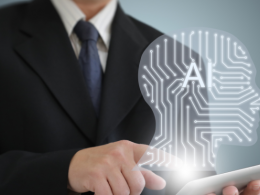Have you ever wondered how machines can recognize faces, understand spoken language, or even drive cars? The answer lies in neural networks, a powerful tool in the field of artificial intelligence. Neural networks simulate the workings of the human brain, processing information through interconnected nodes, or “neurons.” These networks come in various types, each with its unique characteristics and use cases.
In this blog, we’ll explore the different types of neural networks and provide a comprehensive definition of what a neural network is.
So, buckle up and get ready to dive into the exciting world of neural networks!
The Ultimate Guide to Understanding Neural Networks and Their Types
We’ll explore the different types of neural networks and provide a comprehensive definition of what a neural network is.
What is a Neural Network?
At its core, a neural network is a collection of interconnected nodes, or “neurons,” that can process and analyze data. These neurons are organized into layers, with each layer performing a different type of computation. In a typical neural network, there are three types of layers: the input layer, the hidden layer, and the output layer.
The input layer is where the network receives its input data. This data is then passed through the hidden layer, which performs a series of computations on the data. Finally, the output layer produces the final result, which could be anything from a classification to a numerical value.
Types of Neural Networks
There are several different types of neural networks, each with its unique characteristics and use cases. Let’s take a closer look at some of the most popular types of neural networks.
1. Feedforward Neural Networks
Feedforward neural networks are the most basic type of neural network, consisting of a series of interconnected layers.
In this type of network, the input data flows through the layers in one direction, from the input layer to the output layer.
Applications:
- Image recognition and classification
- Speech recognition
- Natural language processing
- Fraud detection
- Credit scoring
- Forecasting and prediction
- Quality control
- Sentiment analysis
- Recommender systems
Advantages:
- Simplicity: Feedforward neural networks are relatively simple to understand and implement, making them a popular choice for many applications.
- Speed: Because the input data flows through the layers in one direction, feedforward neural networks can process data quickly and efficiently.
- Scalability: These networks can be easily scaled up or down, depending on the complexity of the problem at hand.
- Flexibility: Feedforward neural networks can be used for a wide range of applications, making them a versatile tool in the field of artificial intelligence.
Disadvantages:
- Limited learning capacity: Feedforward neural networks have a limited capacity to learn complex relationships between inputs and outputs, and may struggle with problems that require a high degree of abstraction.
- Overfitting: These networks can be prone to overfitting, which occurs when the network becomes too specialized for the training data and fails to generalize well to new data.
- Lack of memory: Feedforward neural networks do not have a memory of past inputs or outputs, which can be a disadvantage for some applications, such as language translation or speech recognition.
2. Recurrent Neural Networks
Recurrent neural networks are designed to handle sequential data, where the order of the input data is important. In this type of network, the output from each layer is fed back into the network as input for the next layer. This feedback loop allows the network to remember previous inputs, making it ideal for tasks such as natural language processing and speech recognition.
Applications:
- Speech recognition
- Natural language processing
- Machine translation
- Time series prediction
- Music composition
- Video classification
- Handwriting recognition
- Autonomous driving
Advantages:
- Memory: Recurrent neural networks can store information about past inputs and use it to make predictions about future inputs, making them ideal for time-dependent data.
- Flexibility: These networks can be used for a wide range of applications, including those with complex and non-linear relationships between inputs and outputs.
- High accuracy: Recurrent neural networks can achieve high accuracy in tasks such as speech recognition and natural language processing.
Disadvantages:
- Computationally intensive: These networks require a significant amount of computational resources to train and run.
- Vanishing gradients: RNNs can suffer from the vanishing gradient problem, where the gradients become extremely small and the network fails to learn.
- Difficulty in training: Recurrent neural networks can be challenging to train, particularly when dealing with long-term dependencies.
3. Convolutional Neural Networks
Convolutional neural networks are specifically designed for image-processing tasks. These networks use a process called convolution, where a small filter is applied to each part of the image to extract features. The network then uses these features to identify and classify the image.
Applications:
- Image classification
- Object detection
- Face recognition
- Self-driving cars
- Medical image analysis
- Video analysis
- Robotics
- Speech recognition
Advantages:
- High accuracy: Convolutional neural networks can achieve high accuracy in image classification and object detection tasks.
- Feature extraction: These networks automatically extract relevant features from the image, eliminating the need for manual feature engineering.
- Translation invariance: Convolutional neural networks can recognize an object in an image regardless of its location or orientation, making them robust to small changes in the input.
- Scalability: These networks can be easily scaled up or down, depending on the complexity of the problem at hand.
Disadvantages:
- Computationally intensive: Convolutional neural networks require a significant amount of computational resources to train and run.
- Overfitting: These networks can be prone to overfitting, particularly when the training data is limited or unbalanced.
- Difficulty in interpreting results: Convolutional neural networks are often considered “black boxes,” making it difficult to understand how the network arrived at its predictions.
4. Autoencoder Neural Networks
Autoencoder neural networks are used for data compression and reconstruction tasks. These networks consist of two main parts: an encoder, which compresses the input data into a lower-dimensional representation, and a decoder, which reconstructs the original data from the compressed representation.
Applications:
- Image and video compression
- Anomaly detection
- Feature extraction
- Data denoising and deblurring
- Image colorization
- Dimensionality reduction
- Data augmentation
Advantages:
- Data compression: Autoencoder neural networks can effectively compress data, reducing storage requirements and transmission costs.
- Feature extraction: These networks can automatically extract important features from the input data, making them useful for tasks such as data denoising and anomaly detection.
- Data reconstruction: Autoencoders can reconstruct the original data from the compressed representation, making them useful for tasks such as image and video compression.
Disadvantages:
- Limited applicability: Autoencoders are typically used for specific types of data, such as images and videos, and may not be suitable for all types of data.
- Limited capacity: These networks have a limited capacity to store information, which can lead to loss of important information during compression.
- Overfitting: Autoencoders can be prone to overfitting, particularly when the training data is limited or unbalanced.
5. Generative Adversarial Networks
Generative adversarial networks, or GANs, are used for generating new data based on existing data. This type of network consists of two parts: a generator, which creates new data, and a discriminator, which determines whether the data is real or fake. The two parts are trained together, with the generator attempting to create more realistic data over time.
Applications:
- Image and video generation
- Text generation
- Music generation
- Game design
- Art generation
- Data augmentation
Advantages:
- Creative output: GANs can generate new and unique data, making them useful for creative applications such as art and music generation.
- Data augmentation: These networks can generate new data to supplement existing datasets, improving the accuracy of machine learning models.
- Realistic output: GANs can create highly realistic output, making them useful for applications such as image and video generation.
Disadvantages:
- Difficult to train: GANs can be difficult to train, requiring a significant amount of computational resources and careful parameter tuning.
- Mode collapse: This occurs when the generator produces only a limited range of outputs, reducing the diversity of the generated data.
- Difficulty in evaluating output: It can be difficult to evaluate the quality of the output generated by GANs, as there may not be a clear objective measure of “realism.”
In conclusion, neural networks are a crucial part of modern computing, allowing machines to process and analyze vast amounts of data.
With the different types of neural networks available, each with its own unique characteristics and use cases, there is no limit to the possibilities for their use.
Understanding the basics of neural networks is essential for anyone working in the field of artificial intelligence or machine learning, and we hope this blog has provided a useful introduction to the topic.
Join Accredian and start your journey from insights to algorithms today! With our extensive collection of Data Science resources, pursue a fulfilling career in data science.
Let’s make your data-driven dreams a reality!





